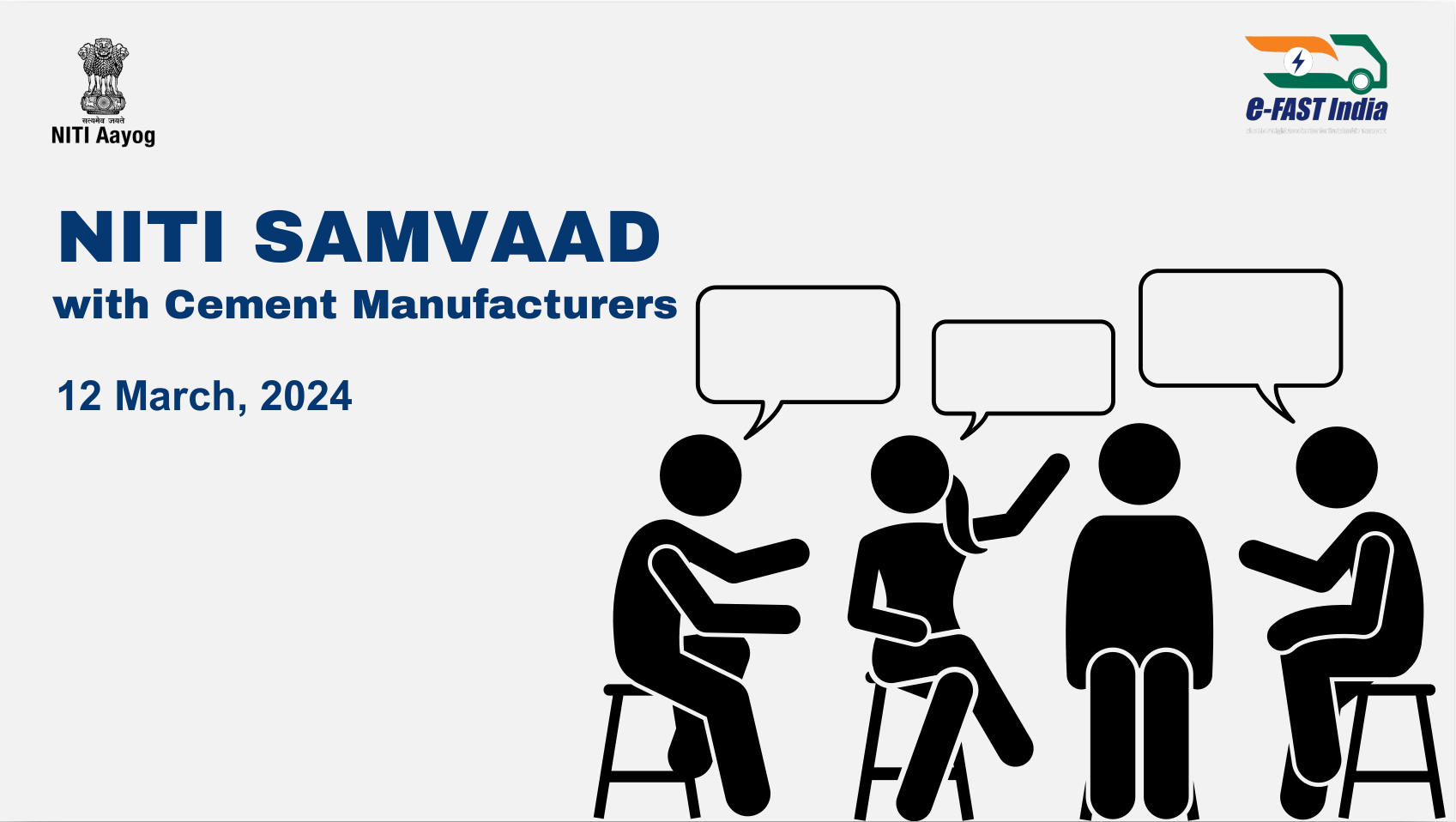Event Detail

NITI Samvaad V with Cement Manufacturers
NITI Aayog and WRI India hosted an exclusive workshop with select leaders from the cement industry to
delve deeper into the intricacies of unit economics and explore policy mechanisms that can narrow the
gap between traditional Internal Combustion Engine (ICE) vehicles and their Electric Vehicle (EV)
counterparts. Esteemed speakers from the cement industry, with firsthand experience in deploying
these trucks, were invited to share their insights.
Topic of discussion: 55 tonner usage for Cement industry
Agenda points:
1. Analyzing the Operational Expenditure (OPEX) comparison between ICE and EV trucks.
2. Assessing the impact of higher Capital Expenditure (CAPEX) on Total Cost of Ownership (TCO),
payback periods, and the price point at which unit economics become attractive.
3. Identifying viable use cases for 55 tonner electric truck adoption
4. Identifying challenges faced in adoption of electric trucks
5. Exploring prospective interventions to bridge the gap between ICE and EV trucks.
Key Participants:
1. Shri Sudhendu J. Sinha, NITI Aayog
2. Mr. S. M. Khan, NITI Aayog
3. Mr. Suvid Kapoor, NITI Aayog
4. Mr. Gautam Sharma, NITI Aayog
5. Mr. Saurabh Palsania, Shree Cements
6. Mr. Rajeev Mehta, Ultratech
7. Mr. Vikram Gupta, JSW Cements
8. Mr. Amrit Pal Raheja, Adani Cements
9. Mr. Ashim Ojha, Adani Cements
10. Mr. Vilas Katwa, Shri Keshav Cements
11. Mr. Deepak Katwa, Shri Keshav Cements
12. Mr. Muralikrishnan K, CII
13. Mr. Joseph Teja, CALSTART
14. Mr. Vijay Jaiswal, SFC India
15. Ms. Sanya Shahi, SFC India
16. Mr. Ashish Saraswat, Climate Group
17. Mr. Sumit Agarwal, Climate Group
18. Ms. Ashpreet Sethi, WRI India
19. Mr. Bhavay Sharma, WRI India
20. Ms, Anshika Singh, WRI India
21. Ms. Manojna Polisetty, WRI India
Key Takeaways from the workshop:
- Establishing green channels for cement operations can help increase the utilization of electric
trucks and make their operations economically viable.
- Creating charging technology standards and protocols for heavy-duty trucks is required for the
interoperability of infrastructure and the development of the ecosystem.
- Develop training and capacity-building programs for drivers to safely operate e-trucks and use
charging facilities.
- Identify corridors of raw material movement for cement industries to put up public charging
infrastructure for better scalability of e-truck operations.
- Financial institutions need to be forthcoming in providing loans with longer maturity periods of
8-10 years and a lower interest rate for funding electric trucks.
- Fiscal incentives including waivers on toll tax, road tax, and reduced tariffs for EV charging in
states will reduce the operating costs for electric trucks.
- The payback period for e-trucks should be within four to five years.
- Fiscal and non-fiscal support is required for 3.5 to 5 tonne e-trucks too as these vehicles are
responsible for final deliveries to customers.
- Battery swapping for electric M&HDV trucks is a new concept. Cost analysis will have to be done
to understand whether this technology can support an effective transition.








